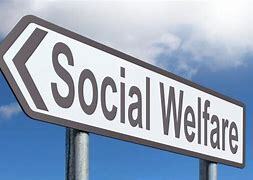
Social welfare refers to a range of programs that aid citizens either financially, educationally, or otherwise. These programs or activities are mainly targeted at groups of people who can’t cater to their welfare.
People enlisted for social welfare programs must prove that their income is below a particular benchmark before the government accepts to take over their care. Such a benchmark is a percentage of the federal government’s approved poverty level. The targeted poverty level for 2021 for any family of four was $26,500.
In the United States, an individual or family who falls below the approved poverty line will be assigned to a caseworker. This officer considers all applications to determine if, indeed, the family or individual applying for the welfare benefits is truly in need of government intervention.
The benefits which may be given differ between states. The eligibility is dependent on some factors, including
The financial status of the applicant
Size of the family unit
Current income
Disability (if any).
You may come across different names in each state, but the function or objectives remain the same. This is important significantly as it raises some sort of confusion when trying to compare the welfare programs between different states.
Also, requirements for eligibility for the programs differ too, and could depend on the state’s poverty level also, which can adjust the benefits to fit the standard of living for the state in view.
The benefits from welfare programs are not offered in the form of cash checks. Most of them are usually offered as tax cuts, while others are grants directly from the federal government.
As such, the question usually arises on how the governments fund the social welfare programs usually offered as grants to the states that run them individually.
All social welfare programs are always included in the Federal Government’s annual budget. Thus, the government funds social welfare programs from taxpayers' money. As with every other budget, it must pass through congress before it gets approved for disbursement.
In some cases, the federal government may not fully fund the projects, and the states will have to find a way to balance the sheets. This usually occurs when congress cuts down on allocations for the budget, a term known as “Unfunded Mandate.”
This means that the state government must pick up the rest of the tab to balance up the planned budget to the targeted programs. A perfect example is seen in the government paying only for SNAP benefits, but the cost of administration relies on funding from the state governments.
Here are some of the programs known to be associated with Social welfare in the U.S.
This is a health insurance system designed mostly for persons with low income and the elderly too.
This package is administered by the office of social security. It provides assistance and succor to adults with disabilities, and children with special needs or treatment like neurological cases, blindness, and even other ailments.
Also known as SNAP, this is one of the few programs where the state government shoulders some of the responsibility after the federal government must have paid for a percentage. It was formerly known as the “Food Stamp Program” where eligible individuals receive food vouchers.
As the government finds the means to get funding through the taxpayers’ money, lots of families get a chance to be saved from downtime poverty as the government takes over caring for them. There’s also the Child’s Health Insurance Program designed mainly for kids in households that may not qualify for Medicaid.
FOR MORE INFORMATION ON HOW JIM McCLAFLIN, EA, NTPI FELLOW, CTRC. CAN BEST HELP YOU WITH YOUR TAX FILING NEEDS, PLEASE CLICK THE BLUE TAB ON THIS PAGE.
THANKS FOR VISITING.
Jim McClaflin, EA, NTPI Fellow, CTRC